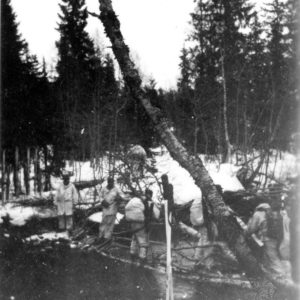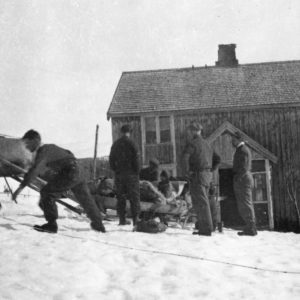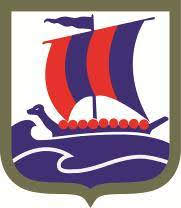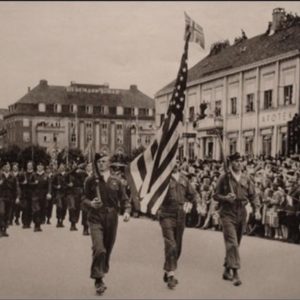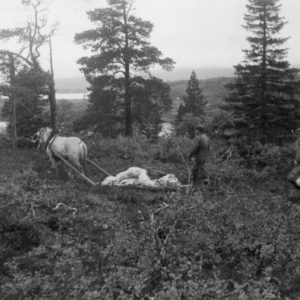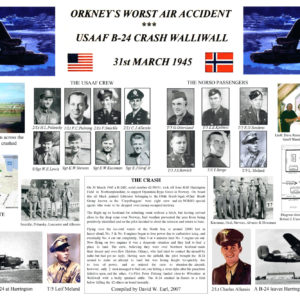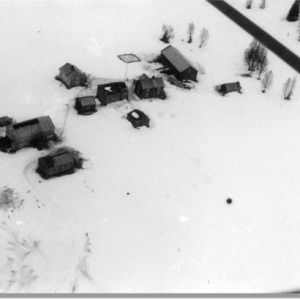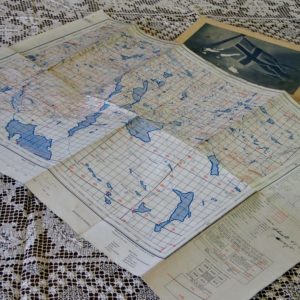“Rype” was the codename of the American airborne unit dropped in the Snåsa mountains on March 24 1945. The task was to carry out sabotage operations behind enemy lines.
From the base at Gjefsjøen mountain farm, the group conducted successful railroad sabotages. The mission purpose was to prevent German forces from withdrawing from northern Norway and reinforce the European theatre. Rype was the only U.S. operation on Norwegian soil during WWII. The unit was part of Office of Strategic Services (OSS), a US intelligence agency during World War II and the forerunner of the Central Intelligence Agency (CIA). The soldiers were mainly recruited from the 99th Battalion, a unique elite unit in the US Army consisting of Norwegians and Americans with direct Norwegian descent, Norwegian-speaking Americans, and in the group there where also some Norwegians that from different reasons had ended up in the US during the war. The operation was led by Major William Colby, later director of the CIA.
It was a demanding job to deploy, reinforce and supply these groups from the air. The planes had to operate on the edge of their range and navigate under challenging winter conditions. Reinforced by Norwegian resistance fighters and personnel from Operation Woodlark, they blew up the Tangen bridge south of Snåsa, 15. April. On April 23., they blew up 2.5 km of railway in the valley Lurudalen, north of Snåsa. Whether the actions were important for the end of the war, historians disagree, but the operations still stand as a human and military feat in the service of freedom.
During one of the flight missions, a plane crashed on the mountain Plukkutjønnfjellet, northwest of Gjefsjøen. All 12 on board perished. A memorial monument was erected in 1949 at the site of the plane crash. A few days before the liberation, a German patrol arrived at Gjefsjøen. Clashes broke out between the Germans and the saboteurs. All five German soldiers were killed and one Norwegian was wounded.
Today Task Force RYPE of the Norwegian Homeguard in Trøndelag has taken the name from the mission.
In 2005, the Home Guard's task forces were established and these were named after various operations from World War II. Trøndelag Homeguard District 12's Task Force RYPE was named "Rype" after the operation during World War II.
The building that was used as the headquarters for Operasjon Rype is now restored by OSS Gjefsjøen and was opened in September 2021.
The story of Operation Grouse told in the book "Kampen om Nordlandsbanen" by Frode Lindgjerdet.

Easter eve, 30. march 1945
Plane crash at the Orkneys
On Easter evening, March 30, a plane from Operasjon Rype crashed at Waliwall near Kirkwall in the Orkney Islands. It was on its way back from an unsuccessful vmission for "Operasjon Rype" in Snåsa and 13 of the 14 on board died. The aircraft was a B-24 Liberator and part of the USAAF top secret operations squadron "Carpetbagger". The plane lost altitude due to icing in carburetors that caused engine failure, and it crashed near Wivenoe and burst into flames. Only two men came out, but one died when his parachute did not open at low altitude, the other survived the co-pilot with minor injuries.
The plane crash night before 7. april 1945
Plukkutjønnfjellet
On the night between 6 and 7 April 1945, a final attempt was made to send reinforcements to Gjevsjøen mountain farm. The plane was to carry extra personnel and equipment for the Norwegian and American soldiers in the base at Gjevsjøen. The weather was bad on the night of April 7, 1945. Those who were to receive the planes heard an explosion early in the morning, which could indicate an accident.

Restoring of Operasjon Rype's headquarter
OSS Gjefsjøen
The building which was headquarter for Operation Rype was in bad shape after standing empty for years. OSS Gjefsjøen are now restoring the building. The association OSS Gjefsjøen will convey the story of Operasjon Rype which in the final phase of World War II operated from its base on Gjefsjøen mountain farm. The building will be restored in the original appearance from when Operasjon Rype was carried out.
Licour based on local herbs and plants from Gjefsjøen
Gjefsjøakevitt (Aquavit)
Distilled at Inderøy Brenneri (distillery) based on pure water, plants, herbs and botanicals from Gjefsjøen Mountain Farm. Made as a tribute to the heros from Operasjon Rype who had their base at Gjefsjøen in the end og World War II.



